madeline j. maldonado gutierrez (she/ella)
phonetic name spelling: MA-duh-lin hyoo-SEL-uh mal-duh-NAW-doh goo-tya-raz
acknowledgement | reconocimiento:
[english] Access to education is and must remain a human right for all. In the occupied Gaza Strip, this right has been systematically denied. We must recognize the deliberate destruction of the Palestinian education system, including schools, universities, and cultural institutions. This is scholasticide. It must be named, condemned, and remembered.
[español] El acceso a la educación es y debe seguir siendo un derecho humano para todos. En la Franja de Gaza ocupada, este derecho ha sido negado sistemáticamente. Debemos reconocer la destrucción deliberada del sistema educativo palestino, incluidas las escuelas, universidades e instituciones culturales. Esto es escolasticidio. Debe ser nombrado, condenado y recordado.
[english] Originally from Southern California, I grew up in several places across the east and west coasts in the US and Guadalajara, Jalisco in Mexico. I’m currently based in New York City for my undergraduate studies at Barnard College and Columbia University as a first-generation student, pursuing a Bachelor of Arts (BA) in Astrophysics as a NSF and (SP)2 scholar.
I'm interested in the direct imaging of exoplanets to understand planetary systems formation, evolution, and their interactions with host stars. My research has included projects in computational astrophysics on star formation rates in young star clusters, detecting and validating transiting exoplanets around nearby M-dwarf stars, and studying the planetary dynamics of systems with distant binary companions. These projects were conducted at the American Museum of Natural History through Barnard’s Summer Research Institute (SRI) in New York City and planetary dynamics research at Yale University.
[español] Originaria del sur de California, crecí en varios lugares a lo largo de las costas este y oeste de los Estados Unidos y en Guadalajara, Jalisco en México. Actualmente vivo en la ciudad de Nueva York para realizar mis estudios de licenciatura en Barnard College y la Universidad de Columbia como estudiante de primera generación, donde curso una Licenciatura en Astrofísica como becaria de la NSF y del programa (SP)2.
Estoy interesada en la obtención de imágenes directas de exoplanetas para comprender la formación y evolución de los sistemas planetarios y sus interacciones con las estrellas anfitrionas. Mi investigación ha incluido proyectos en astrofísica computacional sobre las tasas de formación estelar en cúmulos jóvenes, la detección y validación de exoplanetas en tránsito alrededor de estrellas enanas M cercanas, y el estudio de la dinámica planetaria en sistemas con compañeros binarios distantes. Estos proyectos fueron realizados en el Museo Americano de Historia Natural a través del Summer Research Institute (SRI) de Barnard en la ciudad de Nueva York, así como en investigaciones de dinámica planetaria en la Universidad de Yale.
research interests: planetary system formation; protoplanetary disks; planet-star interactions; planetesimals; stellar populations; exoplanets (detection, characterization, dynamics, and systems), astroinformatics (AI/ML)

Handala, the barefoot boy who turned his back on the world until Palestine is free, was created in 1969 by the late Palestinian political cartoonist Naji al-Ali. Forever stuck at the age of ten, the age that Naji was when he was exiled from Palestine, Handala refuses to grow up until he can return home. Handala has been consistently rendered on protest signs and art in support of the Palestinian people in the midst of the genocide unfolding in Gaza.
know your rights | conozca sus derechos
This know-your-rights booklet by the National Lawyers Guild (NLG) is designed to be a practical resource for people dealing with law enforcement. The 16-page primer advises people of their rights when confronted by FBI agents or the Department of Homeland Security. It also includes information for noncitizens and minors. Find the English and Español version here.
[español]
Este folleto de conocimiento de tus derechos, elaborado por el National Lawyers Guild (NLG), está diseñado como un recurso práctico para personas que tienen que lidiar con las fuerzas del orden. Esta guía de 16 páginas informa a las personas sobre sus derechos cuando se enfrentan a agentes del FBI o del Departamento de Seguridad Nacional. También incluye información para personas no ciudadanas y menores de edad. Encuentra la versión en inglés y en español aquí.
- For legal observers or legal support following an arrest, contact your local NLG
- Palestine Legal, a civil rights organization that monitors the suppresion of Palestine activism, primarily on college campuses
- Browse any Know-Your-Rights category by American Civil Liberties Union (ACLU)
- A group of immigration judges, who almost never speak to the press, describes the dismantling of our immigration court system from the inside
student protests in the us | protestas estudiantiles en la ee.uu.
- Palestine Legal: 2024 End-of-Year Report
- A Letter to Columbia
- Inside Columbia’s surveillance and disciplinary operation for student protesters
- I am a Palestinian political prisoner in the US. I am being targeted for my activism
- Mahmoud Khalil’s Abduction Is a Red Alert for Universities
- Universities nationwide used pro-Palestine protests to expand surveillance
- The Palestine Exception: The crackdown on Israel criticism at Columbia and other US campuses
- Many anti-protest bills have been introduced across the U.S. in 2025
petitions & non-monetary support | peticiones y apoyo no monetario
- Protect the Right to Boycott: Oppose Anti-BDS (Boycott, Divestment and Sanctions) Legislation
- Distorted Definition: Redefining Antisemitism to Silence Advocacy for Palestinian Rights
- BDS Movement
funds | fondos
- [June 2025] Nationwide Bail Funds and Immigration Support by State
- A rotating list of fundraisers for Gazans
other organizations & resources | otras organizaciones y recursos
- Let's Talk Palestine on Instagram, Telegram, Spotify, Whatsapp, and more!
- Information various Topics (Select your language)
- Palestine Datasets, telling their stories through names and numbers
- Palestine 101
- VISUALIZINGPALESTINE | 101
Radial Velocity Follow-Up of Li-Rich Giants with ESPRESSO
Jan. - Sept. 2025
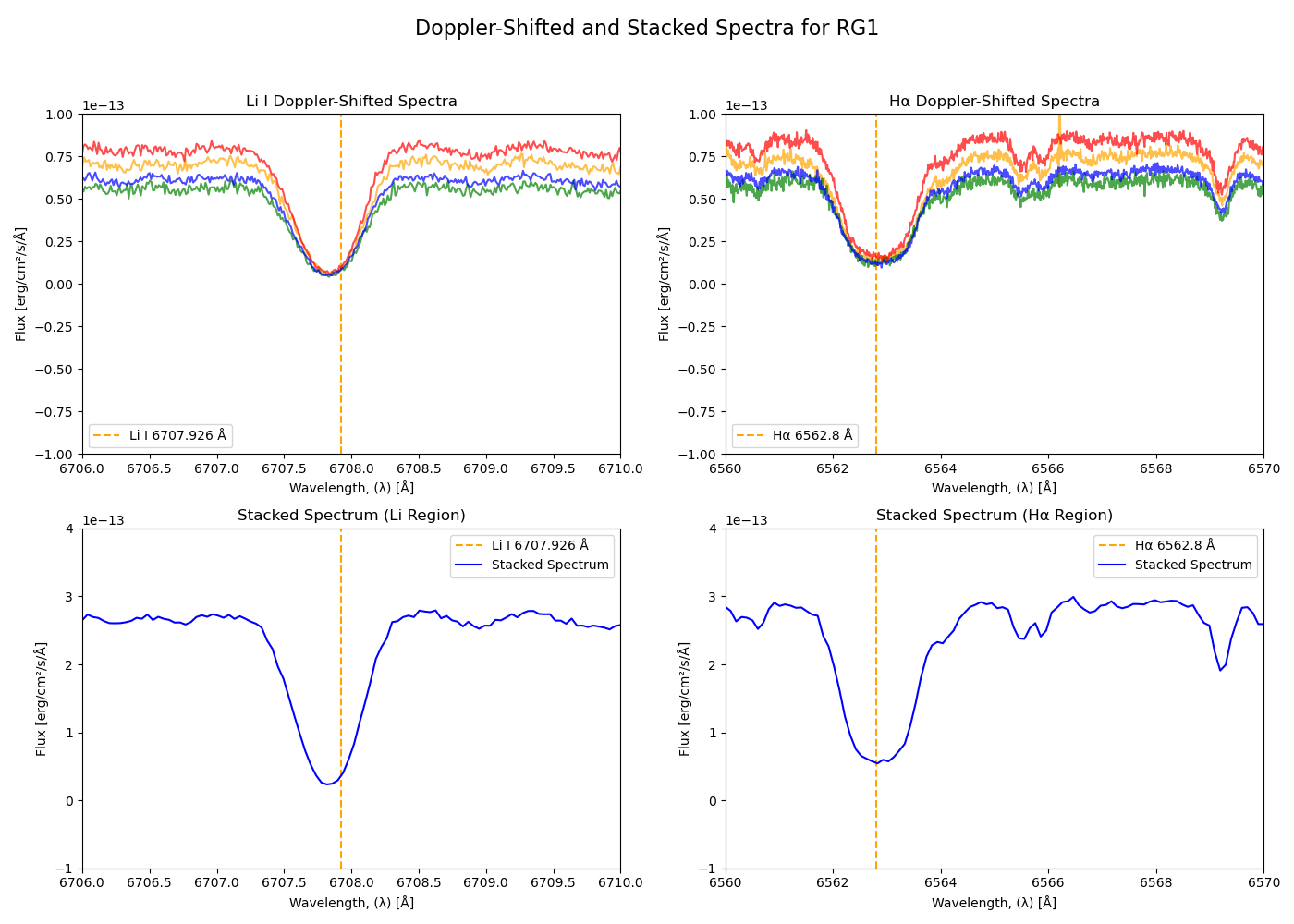
One red giant with all of its observations' stacked spectrum.
Stellar evolution models show that most of the lithium in red giants, taken with the Very Large Telescope in Chile, is destroyed when a star goes through the first dredge up phase after the main sequence. However, ~1% of red giants are lithium-rich. The leading theories to explain lithium-enrichment in red giants is mass transfer from an asymptotic giant branch star, or tidal interactions with a binary star. This project aims to test the binarity of red giants, by using spectra to measure radial velocities and chemical abundances of these objects.
Advisors: Maryum Sayeed, PhD Astronomy Candidate (PI: Dr. Melissa Ness)
Paper: Looking for Companionship: Radial Velocity Follow-Up of Lithium-Rich Giants with ESPRESSO (Sayeed et al., inc MMG 2025)
Connecting binary formation, dissipative precession, and planetary dynamics to understand the present-day orbital configuration distribution
May - July 2025

The massive hot Jupiter candidate CoRoT-2b orbits its primary G7-type dwarf star CoRoT-2 in a prograde direction relative to the stellar rotation with a wide stellar binary companion.
About half of all stars in the galaxy have a binary companion, making it crucial to understand how this additional mass influences planetary systems. Observations of exoplanets in stellar binaries (s-type) have revealed a surprising preference for orbit-orbit-aligned configurations, where the orbits of the planets and the stellar binary lie in the same plane. Additionally, the stellar obliquity—the angle between the host star's spin axis and the planet's orbital plane—has become a significant focus in recent years. One of Malena Rice’s recent works (Rice et al. 2024) compiled the joint obliquity-binary inclination distribution, uncovering a complex picture with notable trends, such as an overabundance of joint orbit-orbit and spin-orbit aligned systems, alongside systems with significant spin-orbit misalignment. This project aims to theoretically explain these trends by connecting three key processes: the primordial orientations after star formation, dynamical evolution during the protoplanetary disk phase (dissipative precession), and post-disk dynamical effects such as planet-planet scattering and Kozai mechanisms. Using realistic birth configurations from star formation theory, the project will employ an evolution code (Gerbig et al. 2024) to model disk dynamics and use the outcomes as initial conditions for Rebound simulations of planetary dynamics. The goal is to understand the role of these processes in shaping final orientation distributions, with a focus on N-body simulations and Rebound, a tool widely used in astrophysical studies.
Advisors: Dr. Konstantin Gerbig and Dr. Malena Rice, PI
Detection and Validation of Transiting Exoplanets Around Nearby M-dwarf Stars
May - Aug. 2024
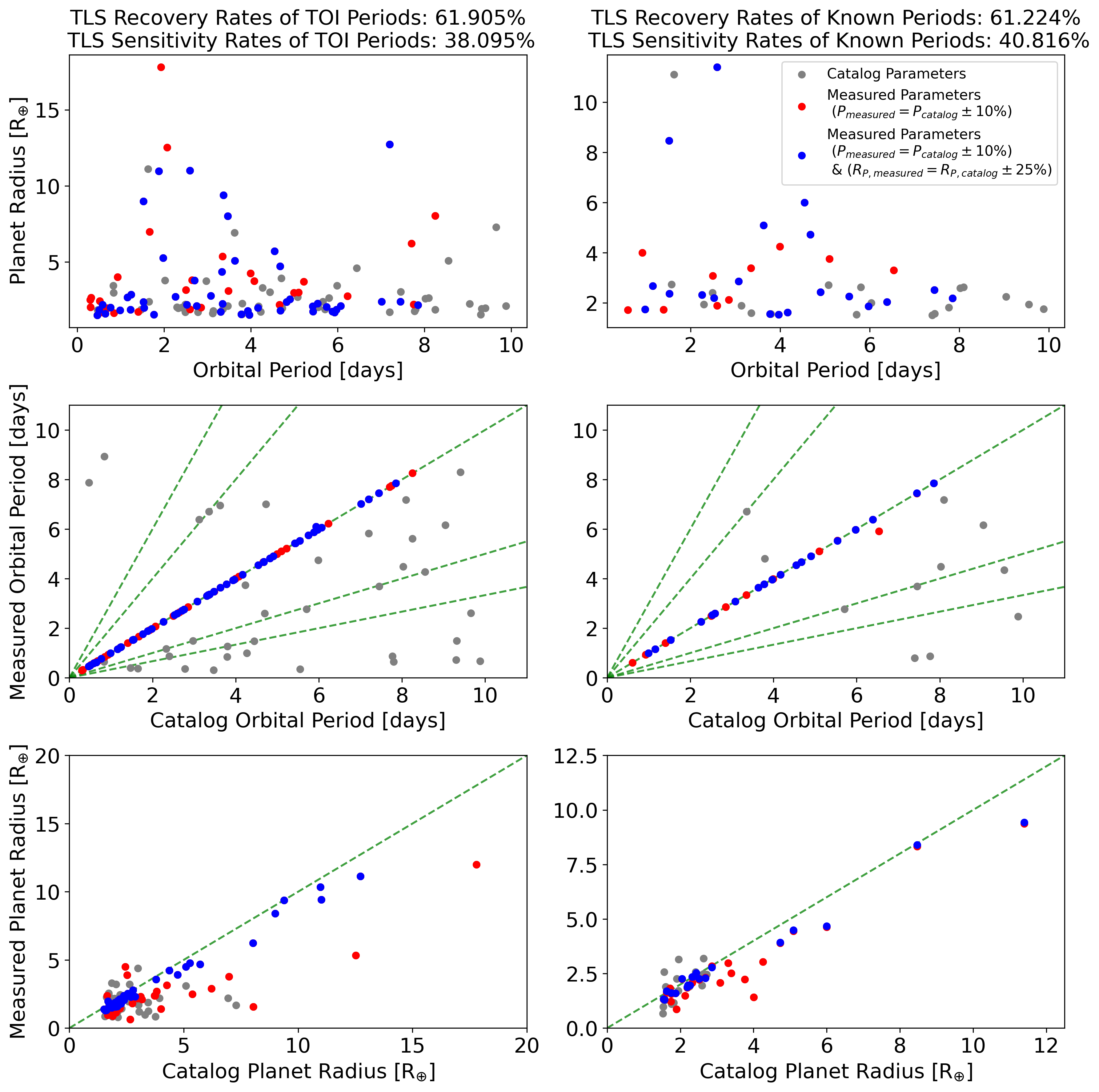
We compared our TLS results of orbital periods and planet radius using both the published data and our measured data.
In the Milky Way galaxy, cool and dim M-dwarfs constitute the majority of the stellar population. However, their intrinsic faintness has posed challenges for many telescopes in obtaining high precision photometry. Throughout the 2010s, NASA's Kepler mission primarily targeted Sun-like stars, leading to the discovery of thousands of exoplanets—planets orbiting stars beyond our solar system. In contrast, NASA's Transiting Exoplanet Survey Satellite (TESS) is specifically designed to study redder stars, such as M-dwarfs, which are more likely to host smaller, rocky planets similar to Earth. This project focuses on identifying transiting planets around M-dwarfs, characterized by periodic decreases in brightness due to planetary eclipses of stars in our field of view. We have developed a custom algorithm in Python to process TESS images, extract and clean photometry, detect orbital periods of transiting planets, and validate the authenticity of these planet candidates. We tested our transit detection and vetting algorithm on 49 confirmed transiting planets with published planet masses, along with 126 planet candidates from the TESS mission, known as TESS Objects of Interest (TOI). The recovery rates were approximately 61.91% for TOIs and 62% for the confirmed nearby M-dwarfs planets. Through the research project, we aimed to establish a methodology that yields a high number of validated transiting exoplanets, potentially uncovering previously undetected planets missed by the TESS mission.
Advisor: Dr. Dax Feliz (PI: Dr. Ruth Angus)
The Effect of OB-type Stars on the Star Formation Rate in Star Clusters
May - Aug. 2023

A cloud with different initial mass (M4: m = 104 M⊙; M5: m = 105 M⊙; M6: m = 106 M⊙ in free fall (M6: tff = 0.67 Myr; M5: tff = 2.1 Myr; M4: tff = 6.7 Myr) for gas to collapse from only gravity. The average fraction of massive stars is constant, but the mass of each individual star is randomly selected. At specific times, the total star formation rate (SFR) is slightly reduced after the formation of massive stars. The figure shows the evolution of the SFRs for all stars (red dashed line) and O-type stars (blue line).
Most stars form in star clusters, which are populations of gravitationally bound stars that have similar ages and elemental abundances. This similarity indicates that they formed in the same molecular cloud, and since they also have similar ages, star clusters must form quickly. The consensus on why they form rapidly is that the feedback from massive stars (> 8 solar masses), such as O-type stars, stops the cluster formation due to their high ionizing luminosity, strong stellar winds, and short lifetimes before supernova explosions. The accumulated feedback eventually stops the cluster formation on timescales of 1-10 million years. Our hypothesis is that if the O-type stars with feedback form early, then the cluster will evolve differently. The prediction is that fewer stars will form after the birth of the first O-type star. We examine this hypothesis by analyzing theoretical models of the star cluster formation process simulated with the computer program Torch. Torch is a collection of numerical codes that communicate through the AMUSE framework to model different physical processes for star cluster formation: FLASH for the hydrodynamics of the gas; PETAR for collisional dynamics of stars; SeBa for the evolution of stars. We plot the total star formation rate and that for O-type stars as a function of time, providing insight into the rate at which stars form within different simulated clusters. In the models explored, feedback from the first O-type stars is found to produce a drop in the star formation rate, thereby confirming the hypothesis.
Advisors: Dr. Eric Andersson and Dr. Mordecai-Mark Mac Low, PI
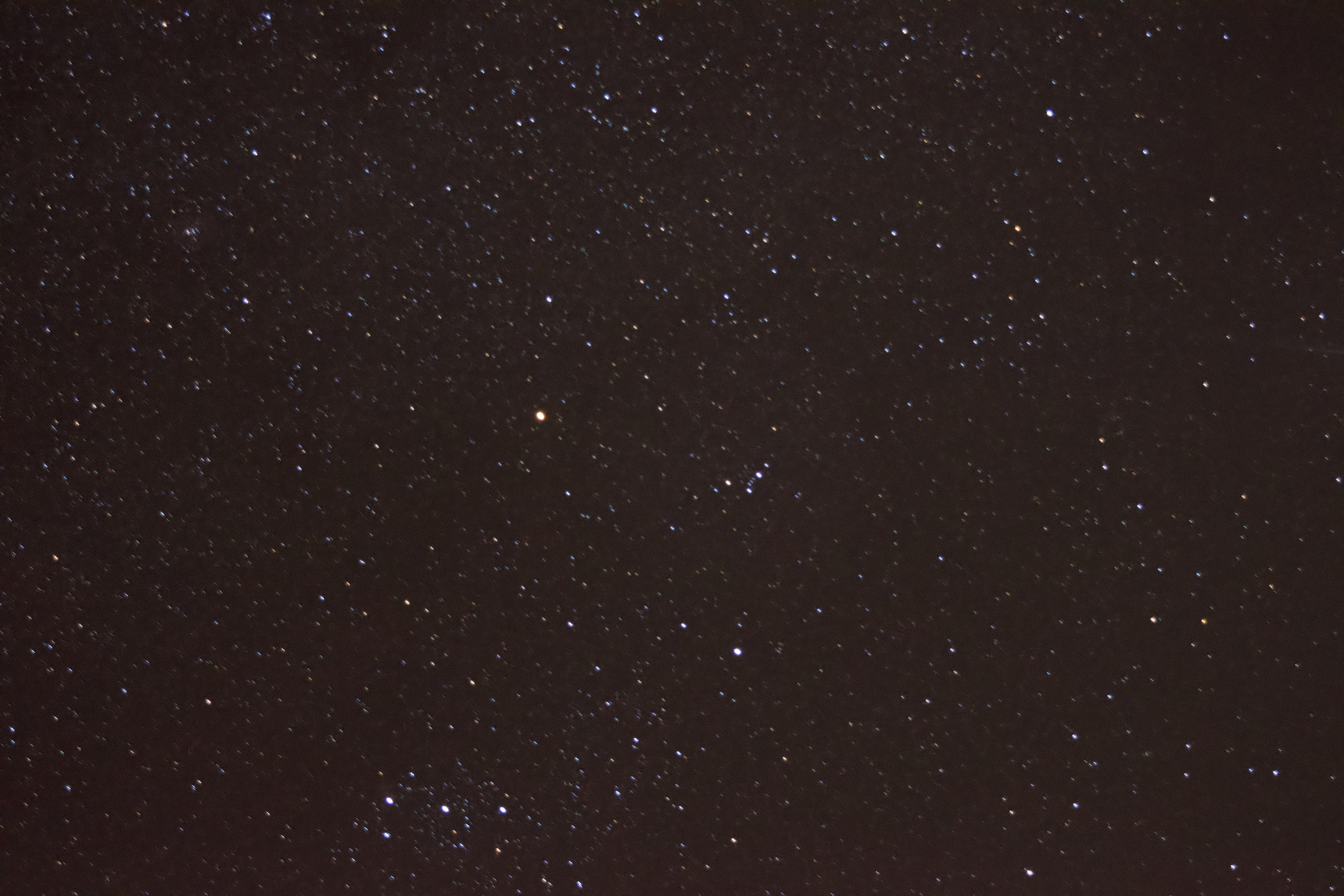
mars viewed from tucson, az. credit: me and a friend
you'll find a few highlights here and vlog section from my undergraduate work. click here to view my full CV!
research presentations
Connecting binary formation, dissipative precession, and planetary dynamics
Oct. 2025
Science Journal Club Seminar at Barnard College
July 2025
Barnard College’s Summer Research Institute Lida Orzeck ‘68
Venus Visionaries: Preliminary Design Review
April 2025
NASA L'SPACE Mission Concept Academy Review Panel
Detection and Validation of Transiting Exoplanets Around Nearby M-dwarf Stars
Jan. 2025
American Physical Society CU*IP at New York University
Oct. 2024
SACNAS Conference, Phoenix, AZ
Sept. 2024
Columbia Astronomy Department's Astrofest
July 2024 Barnard College’s Summer Research Institute Lida Orzeck ‘68
The Effect of OB-type Stars on the Star Formation Rate in Star Clusters
Oct. 2023
SACNAS Conference, Portland, OR
July 2023
Barnard College’s Summer Research Institute Lida Orzeck ‘68
software packages
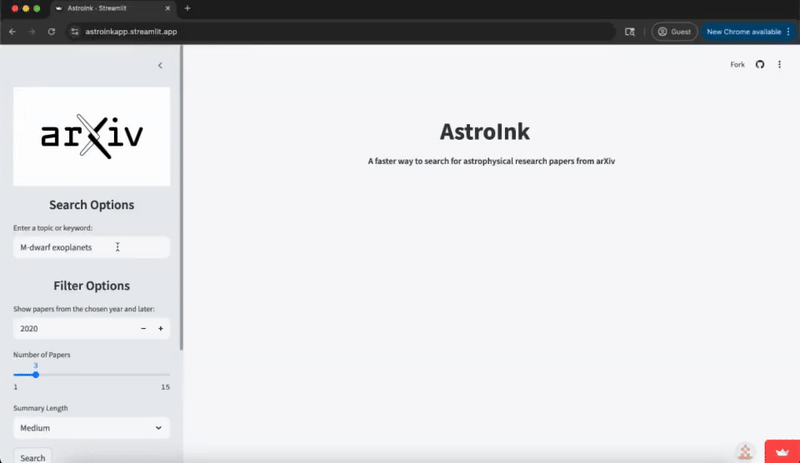
AstroInk: a public web application for astrophysical literature search and summarization, integrating arXiv API querying, fast summarization, and citation generation using Streamlit and deployed on Streamlit Cloud.
course projects
Paper: Integrating a Fiber Optic Cable into a 3D-Printed Spectrograph
Paper: TIC 46432937 b: A Gas Giant Planet Transiting an M-Dwarf Star
teaching & outreach
undergraduate course grader, dept. of astronomy & astrophysics, columbia University
- Fall 2024: Stars and Atoms (ASTR-UN1836)
- Spring 2026:
outreach, dept. of astronomy & astrophysics, columbia University
- Spring, Fall 2025
skilllz
languages: español (mother tongue), english (bilingual proficiency)
computational languages: Python, Julia, Java, bash, LaTeX, HTML/CSS
python libraries: Pandas, Matplotlib, NumPy, Sympy, Scipy, scikit-learn, Astropy
astronomy packages: Lightkurve, yt, KORG
misc. tools: Overleaf, Excel, Github, Jupyter Notebook, Linux terminal, Visual Studio Code, HPC cluster, Git, Slurm Workload Manager
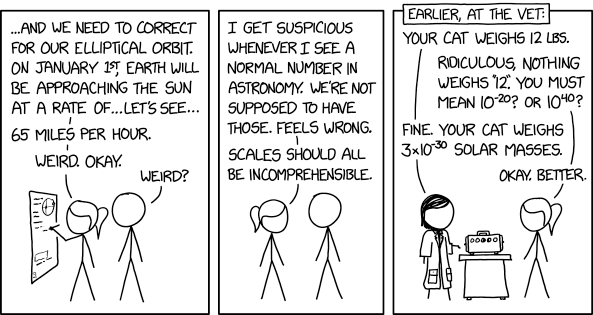
credit: xkcd
these are how-to resources and useful information I’ve accumulated over time and participated in. feel free to check them out, especially if you’re entering your second year of undergrad!
astrophysics pedagogy
- a compilation of teaching resources all in one place
- quantum mechanics simulations
getting started in astrophysics research
- doodle annotations in research papers
programming/coding
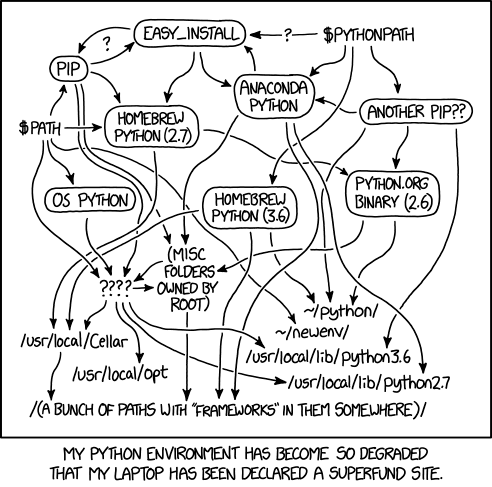
credit: xkcd
- python bootcamp basics with tutorials
- python for astronomers with a textbook and tutorials
- a must-know jupyter notebook tips, tricks, and shortcuts
- git commands cheat sheet
- markdown doc guide for basic syntax
- LaTeX mathematical symbols (applicable in Overleaf)
- foundations of data science
- astrophysics-focused research tutorials
advising & mentorship
- Alliance for the Low-Income & First-Generation Narrative (AL1GN) is a student-centered mentorship series and coalition dedicated to empowering and connecting first-generation and low-income (FGLI) students supported by the Heising-Simons Foundation.
- #VanguardSTEM Unbound Guerilla Mentoring Program is an online platform and community devoted to encouraging conversations between emerging and established women of color, girls of color and non-binary people of color in STEM.
- Científico Latino: Graduate School Mentorship Initiative (GSMI) is a program that pairs prospective PhD applicants with a mentor based on their research and graduate program interests. They provide GSMI Scholars with graduate school preparation material, one-on-one guidance from a mentor in their STEM field, financial assistance in the form of fee waivers and a scholarship fund, feedback on written materials, access to webinars, mock interviews, and access to a broader community of mentors.
astronomy-focused workshops/programs
- [WOC]CODE is an open-source programming program designed for anyone who feels that this is the right environment for them. They provide a low-pressure and judgement-free environment to learn and develop coding skills
- Code/Astro is a week-long astronomy software development workshop motivated by the growing usage of open-source software in astronomical research. The goal of this program is to teach participants fundamental software engineering skills and best practices for building sustainable open-source packages for astronomy applications. You get to build your own software package with a group!
- NASA L'SPACE Program offers two 15-week, free, virtual academies designed to prepare you for your career in the space ecosystem: Mission Concept Academy (MCA) and NASA Proposal Writing and Evaluation Experience (NPWEE). MCA provides hands-on experience in NASA mission planning and design. Participants receive training from NASA and industry scientists and engineers, collaborating with an interdisciplinary team to develop a preliminary mission concept following the NASA mission life cycle. NPWEE teaches participants how to identify NASA needs and create innovative solutions to NASA’s exploration challenges. Teams compete for the chance to win a $10,000 prize.
exoplanet research
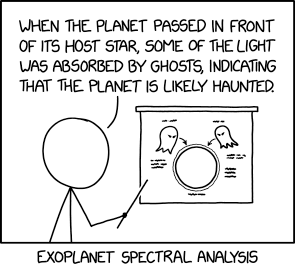
credit: xkcd
- what are exoplanets? a transit tutorial
- transit method:
- transit finding charts use ephemeris data from the NASA Exoplanet Archive and ExoFOP-TESS

credit: NASA
grad school
- you can find ANYTHING here!
you can mainly email me or find me on github, linkedin, and orcid.
email: mjm2418 [at] barnard [dot] edu